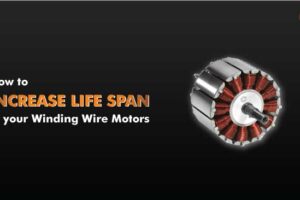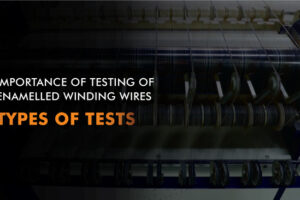Magnet Wires or Enamelled Wires, also known as Winding Wires are Copper (Cu) or Aluminium (Al) wires coated with a very thin layer of insulation. They are widely used in the construction of transformers, inductors, motors, generators, speakers, hard disk head actuators, electromagnets, electric guitar pickups and other applications that require tight coils of insulated wire.
Winding Wires are an integral part of any motor and a crucial component that impacts the efficacy and durability of the equipment. Even though it seems simple, winding wires or magnet wires are complex products with a wide variety of elements which can impact their application, efficacy and life.
Some of the common problems which may impact are :
- Difficulty in removal of enamel, leading to production efficiency loss. This is usually caused due to higher class of insulation used and/or attempt to remove the enamel chemically
- Pin Holes and low BDV is another problem which impacts the Layer NG and short winding. This is caused due to improper curing, foreign particles or dust on the conductor, unclean conductor or the pulleys not being clean
- Low Elongation which results in breakage of wire during winding. This could be due to improper annealing at the final or intermediary stage
- High Resistance in the wire resulting in equipment parameters not being met. This could be due to low conductor diameter or low purity of the conductor.
- Hardness in the wire which results in the wire either not fitting into the coil space or the wire getting cut during insertion. The common reasons for this are insufficient or excess lubrication on the wire or improper annealing of the wire.
It’s therefore important to test the wires using proper equipment and guidelines to ensure that the wires meet the required performance parameters and quality standards.
In our next article, we will discuss about the various types of tests for winding wires.





